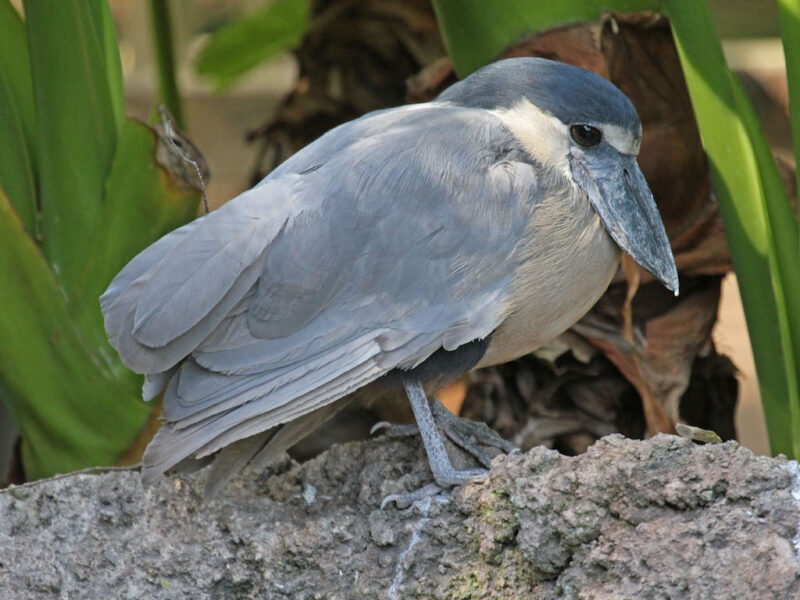All about the Boat-billed Heron.
Class: Birds
Order: Ciconiiformes
Family: Ardeidae
Genus: Cochlearius
Species: cochlearius

All Herons have a specialised downy feather that doesn’t moult and grows continuously throughout the bird’s life. The ends break off as a powder the heron then uses to waterproof its other feathers while preening.
Overview.

The Boat-billed Heron is a heron of a different sort, evolutionarily, behavioural and anatomically. At least one feeding behaviour, Scoop feeding, makes use of its grandest feature. Its courtship behaviour is very different from typical herons, as is its vocal repertoire of songs and calls. It is basically a solitary to modestly aggregative, nocturnal, shallow water-wading species. Its broad range and local commonness show it continues to be a successful species, one that suggests the potential for diversity within the family of herons.
Physical Appearance:
Herons are a stocky medium-sized bird. Their bills are as wide as their heads, and they have large eyes that aid in night hunting. Their beak is very sensitive, allowing them to feel our prey in murky water. They have a dark crown and flight feathers and a light underbelly and face.
Size:
Weight: 1 pound
Length: 20 inches long; wingspan of 30 inches
Diet:
Fish, shrimp and insects. They can also feed on small mammals and amphibians.
Reproduction:
The heron’s breeding season is during the local wet season which varies across their range. The female lays two to four eggs and both parents incubate them for 21 to 26 days. Chicks are born altricial (blind) and are fed by both parents over the course of six to eight weeks, after which they fly away.
Behaviour:

Boat-billed herons are nocturnal. They hunt at night and rest/preen during the day. However, during the breeding season, they’ve been known to hunt during the day as well, in order to feed their young.
These birds are normally solitary, only gathering to mate. They’re monogamous during the breeding season and possibly beyond. Data are insufficient to support lifetime monogamy with a single partner. Both parents take care of the young and defend the nest.
Habitat/Range:
Boat-billed herons live in a wide range of mangroves, marshes and tropical rainforests throughout Central and South America.
Median Life Expectancy:
8.8 years
Role in their Habitat
Boat-billed herons are predators of fish, shrimp and small mammals and amphibians. They’re preyed upon by snakes, foxes and raptors.
Conservation.
The species is widespread and found in suitable habitats throughout its range. There is little information available on population sizes and status. In areas, counts are 200-300 pairs. Overall it is common in places but rarely abundant. It is particularly common in parts of Mexico, Costa Rica, Belize, Nicaragua, and Suriname. It is uncommon in Panama.
